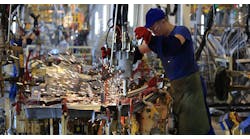Opinion/Analysis
To say the recent America-China summit in Alaska didn’t go well would be a monumental understatement. It was no surprise to the Chinese contingent that the Americans’ opening gambit was to roll out the same litany of accusations about China’s human rights abuses and aggressive behavior that the U.S. has been touting for decades.
It was China’s response that was significant here. In a stark departure from its normal diplomatic and conciliatory language, China fired back, pointing out that America was in no position to criticize anybody for human rights and aggression. It was an acknowledgment that they had had enough. It was a watershed moment.
What was clear was that America had no genuine interest in repairing a relationship that hit an all-time low under the previous administration. None of this was a surprise to the Chinese. They have long accepted the inevitability of de-coupling. Well before the Alaska debacle, the Chinese public have been questioning why they are helping to support American manufacturing, when America seems intent on destroying China’s.
The American position in Alaska was likely for the consumption of the American public. It is doubtful that American contingent expected the rest of the world to buy it.
Only recently has the U.S. been attempting to isolate China and prevent its rise as an economic competitor. At the same time, it has been using it as a low-cost manufacturing center to boost corporate profits at the expense of the American people. The obvious contradictions inherent in this two-step policy are now being felt.
If there is to be a positive to come out of the Alaska summit, it can only be that Americans finally accept what the Chinese have known for some time. De-coupling is real. The divide between two separate and seemingly incompatible systems is now pretty obvious. We have all already witnessed this disengagement in media, technology, and the financial system. It also appears that following Alaska, the Chinese don’t see much point in future political engagement either. What’s next?
There are supply shortages in America. The dearth in semiconductor chips has slowed down much of America’s auto industry; it will also impact production across a wide variety of other tech-dependent sectors. But it is not just chips. Shortages across all components and raw materials are being felt. Even less obvious sectors such as construction are being affected. COVID-19 caused disruptions across the global supply chain that are not even close to being resolved yet.
There are associated impacts. Believe it or not, availability of container shortages is among them. You may ask “How can this be?” One cause is that the demand for Chinese goods has not gone down. Evidently, American consumers are outraged at how they perceive China has taken advantage of the United States, but they still buy based on price. This means that the transport ships delivering those goods can make more money by dropping them off at U.S. ports—rather than waiting days or sometimes weeks to have return goods loaded—and immediately turn around to bring more products from China.
An example of the harm this has done to U.S. businesses is seen in the Northwest’s fruit-growing industry. Because of what is cited above, when goods are dropped off at Seattle, the shippers do not wait for apples to be loaded for delivery to Asia.
Every country in the world is waiting for supplies. Not just America. Unfortunately, no country in the world is as dependent on imports as the U.S. There are very few industries and original equipment manufacturers in the U.S. that are not reliant on imports.
What Americans may not realize is that many of these shortages are not due to disruptions caused by COVID-19. For the last year, many Chinese companies have been purposely delaying or declining orders of strategic product from American companies. Where orders are still in the supply chain, American companies are often now at the back of the line. China prioritizes orders to countries they regard as friends and/or allies. Evidently, China does not consider America in this regard.
Expecting a quick resolve to the current supply chain crisis is fanciful. Our government’s response is to grant manufacturers of strategic product $37 billion to increase chip capacity in the United States. Practical peoples will probably look upon this as a positive move. Advocates of the free market, not so much. Regardless, the sad reality is America is at least a generation away from any kind of self-sufficiency in too many important areas. Rare earths and pharmaceuticals are two more examples of this.
But while shorter-term reactions such as funding U.S. industries to reshore their manufacturing may be a good first step, more is needed. The United States desperately needs a longer term vision for conducting international trade as well as an industrial strategy that aligns with it. We don’t see much evidence of either.
Paul Ericksen’s book is Better Business: Breaking Down the Walls of the Purchasing Silo. Ericksen has 40 years of experience in industry, primarily in supply management at two large original equipment manufacturers.
Eamon McKinney, Ph.D., M.B.A., (sinologist) is an expert on China-related business issues in the world. He has contributed numerous articles on the subject to publications including the Financial Times, the Economist and the Far Eastern Economic review.





